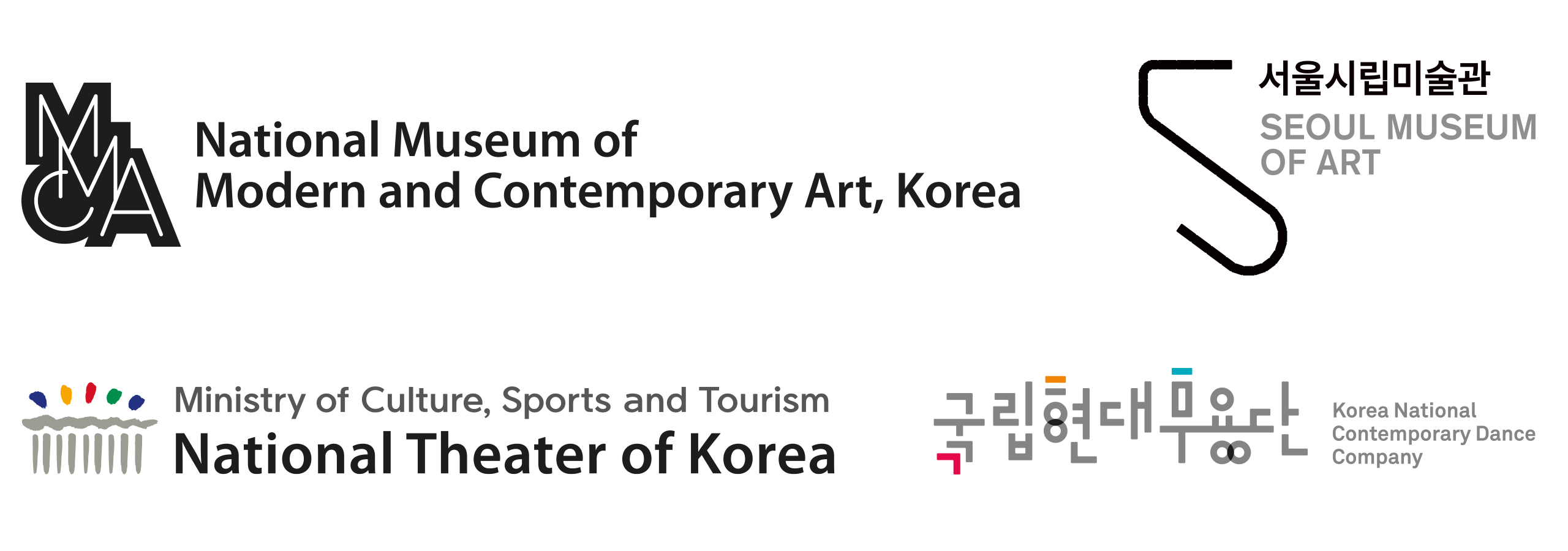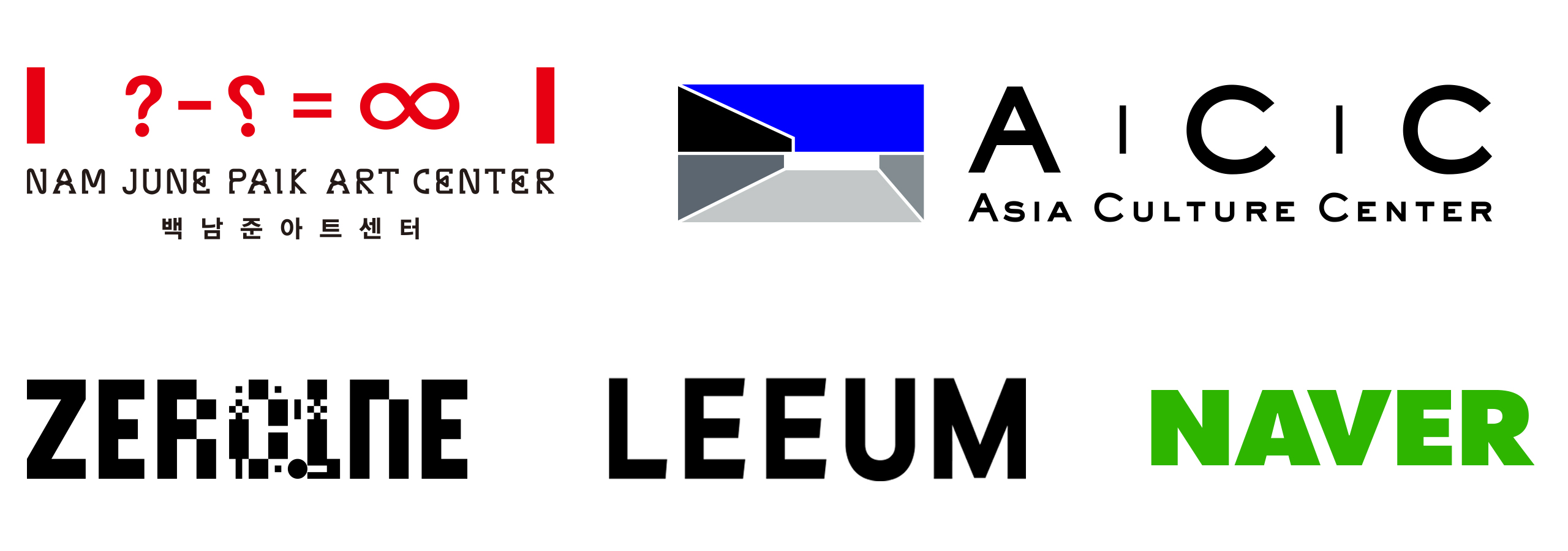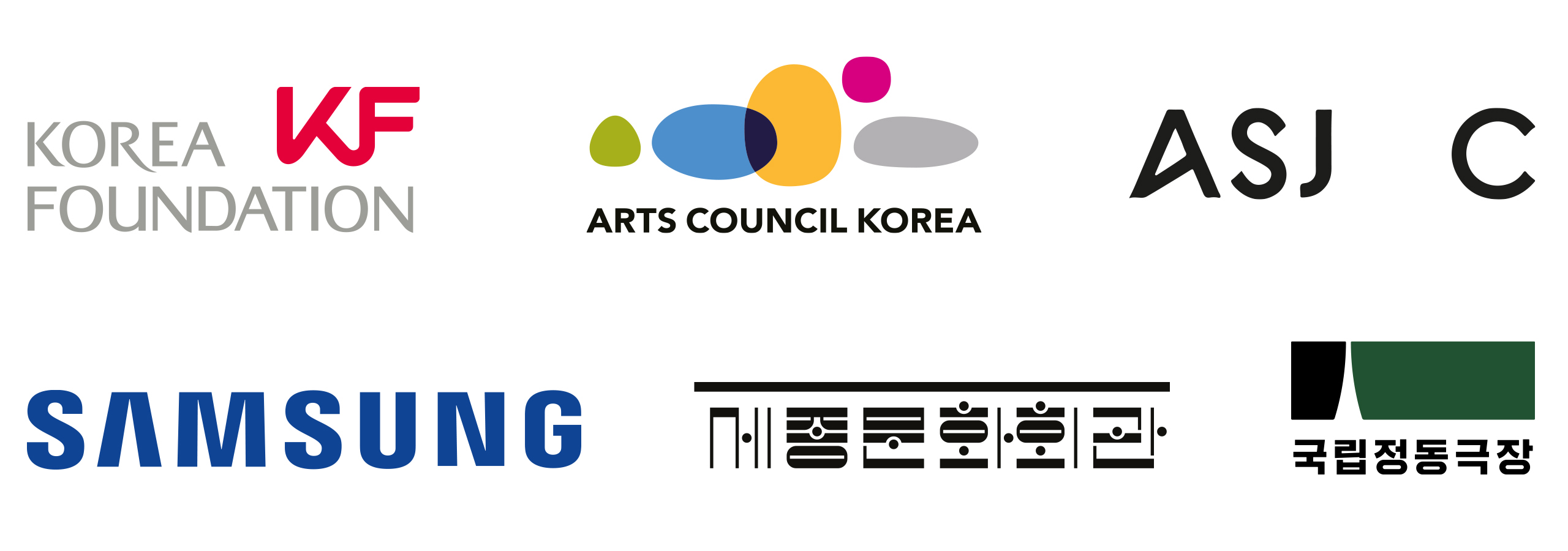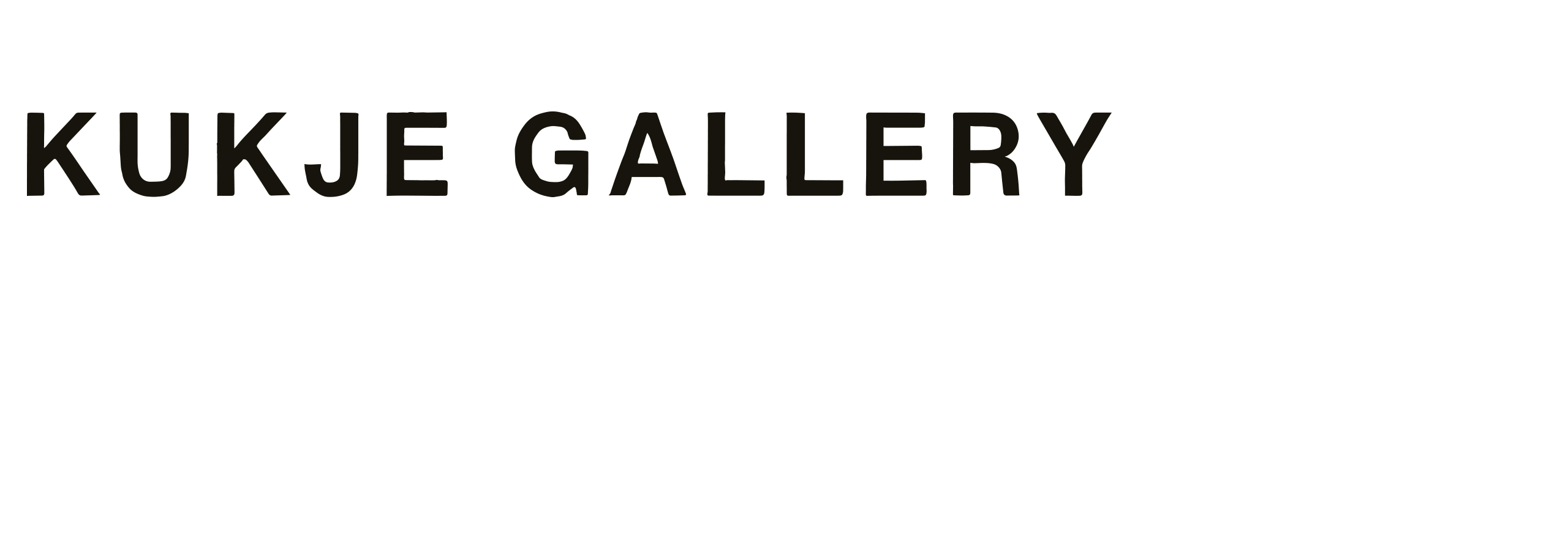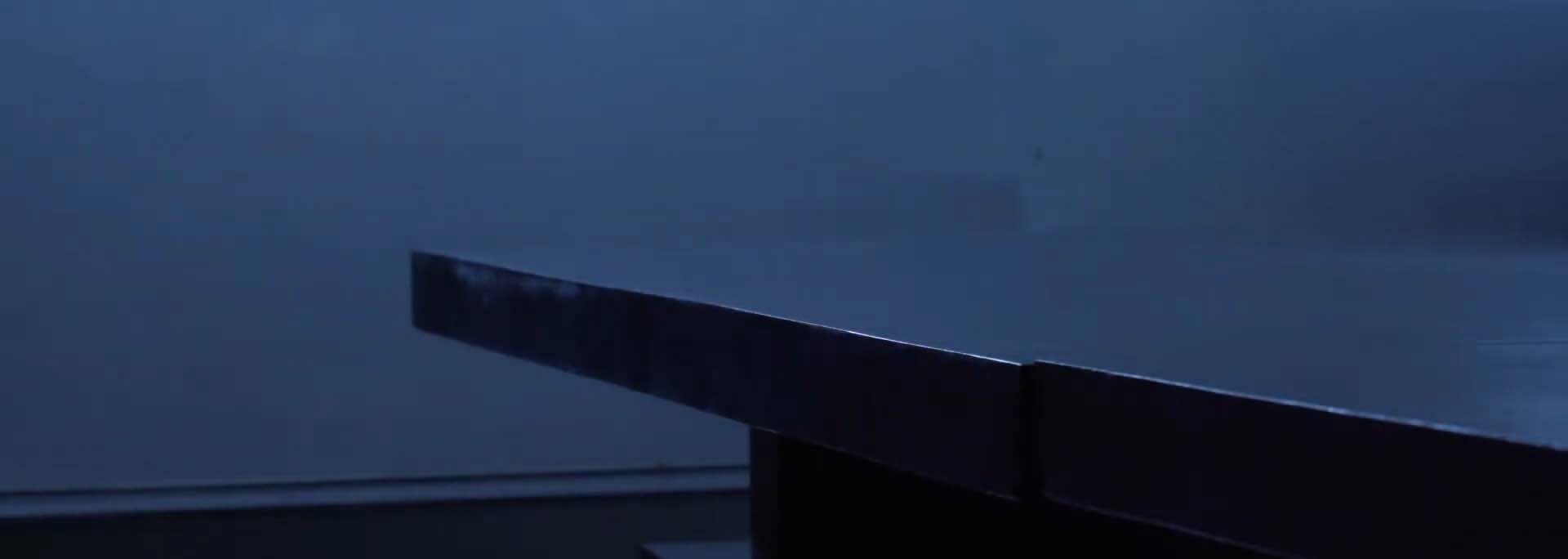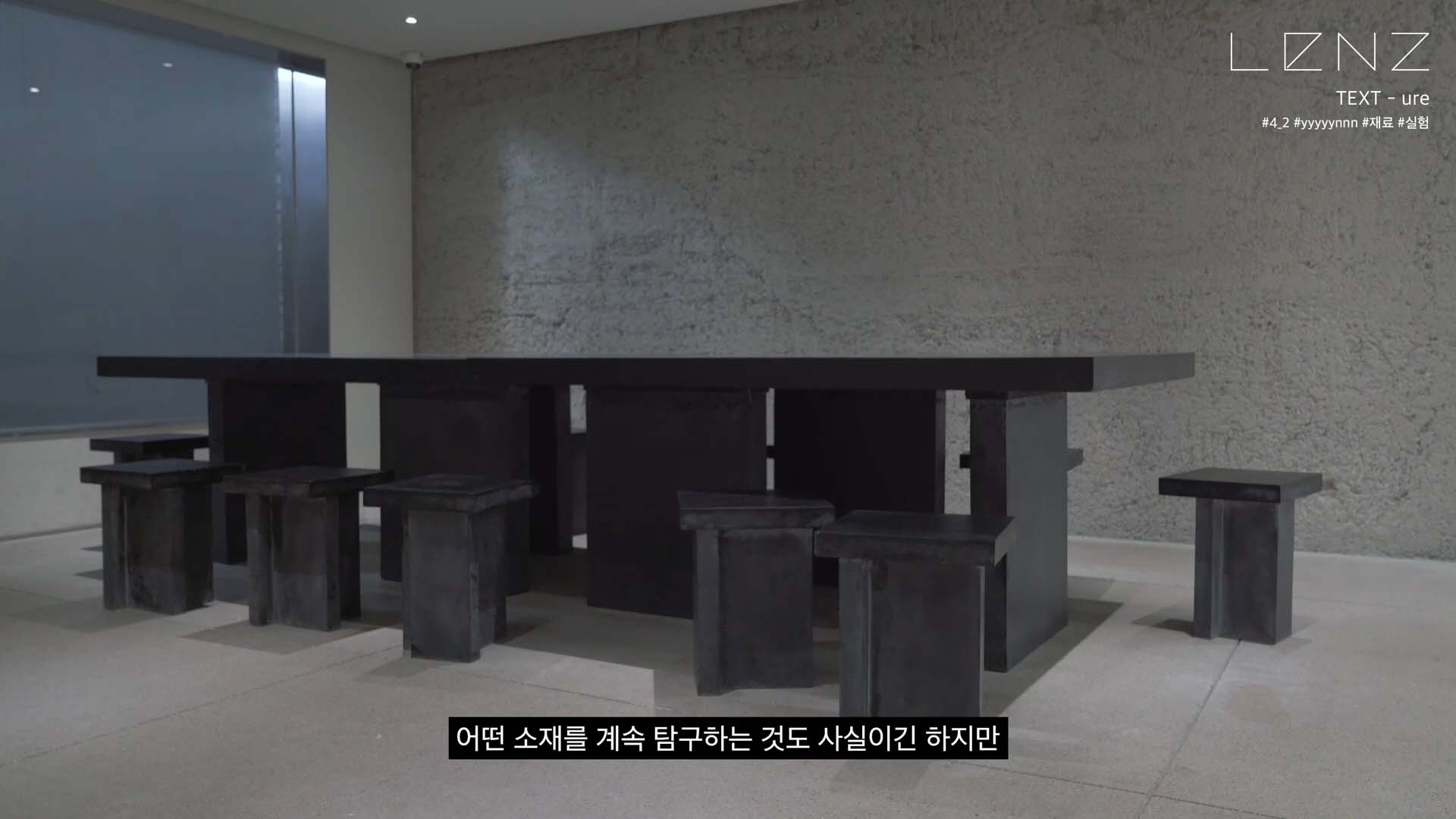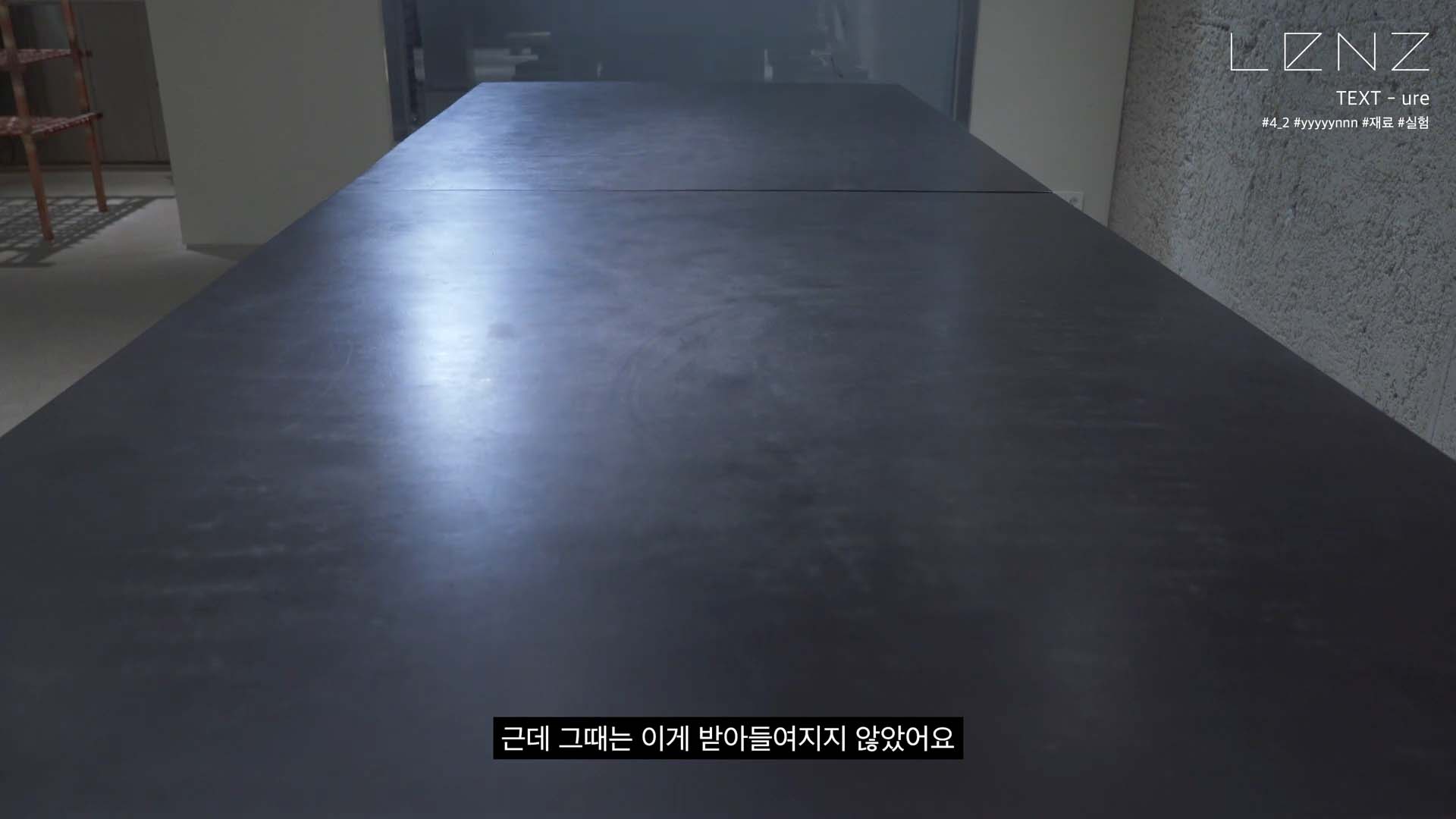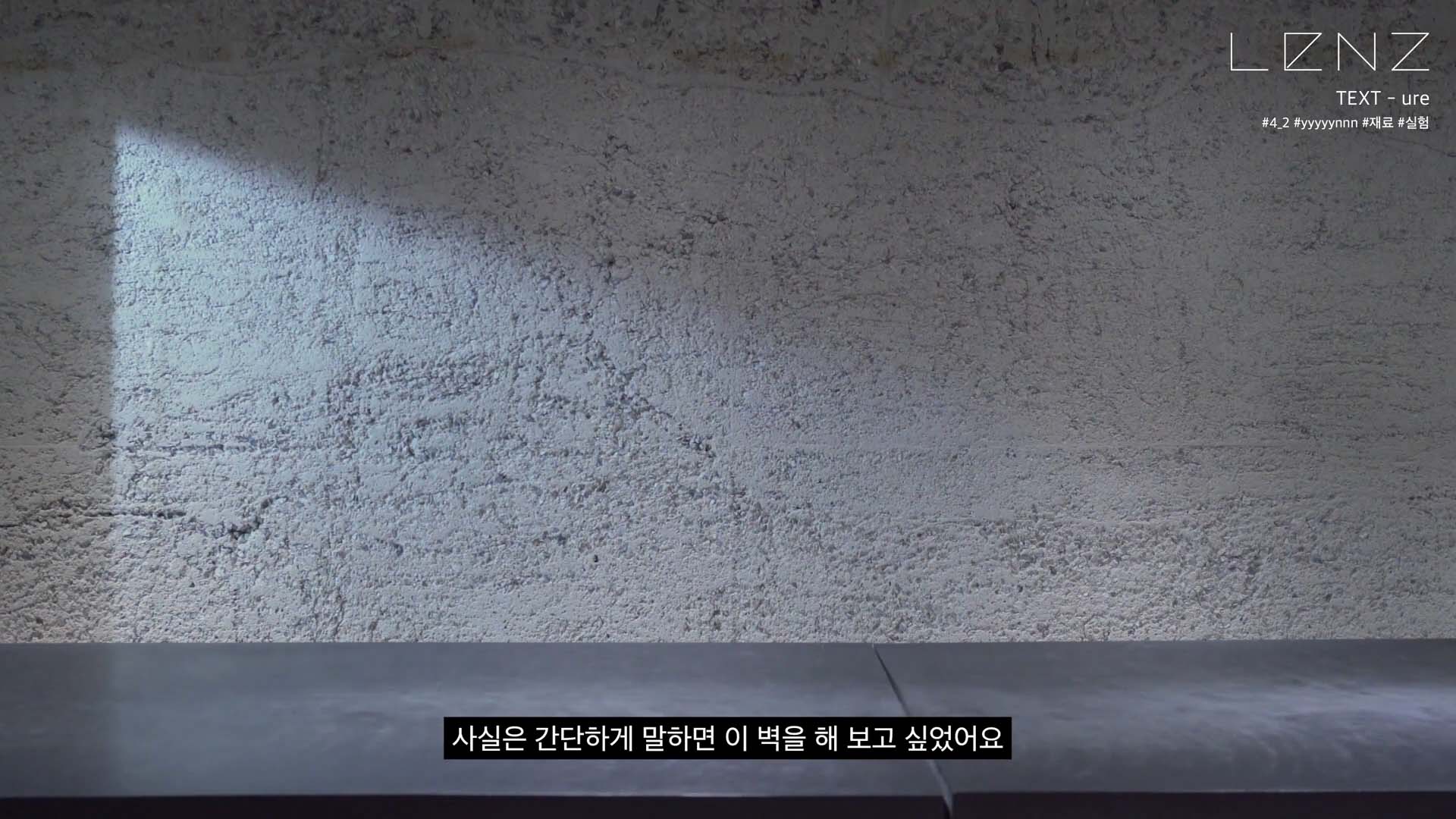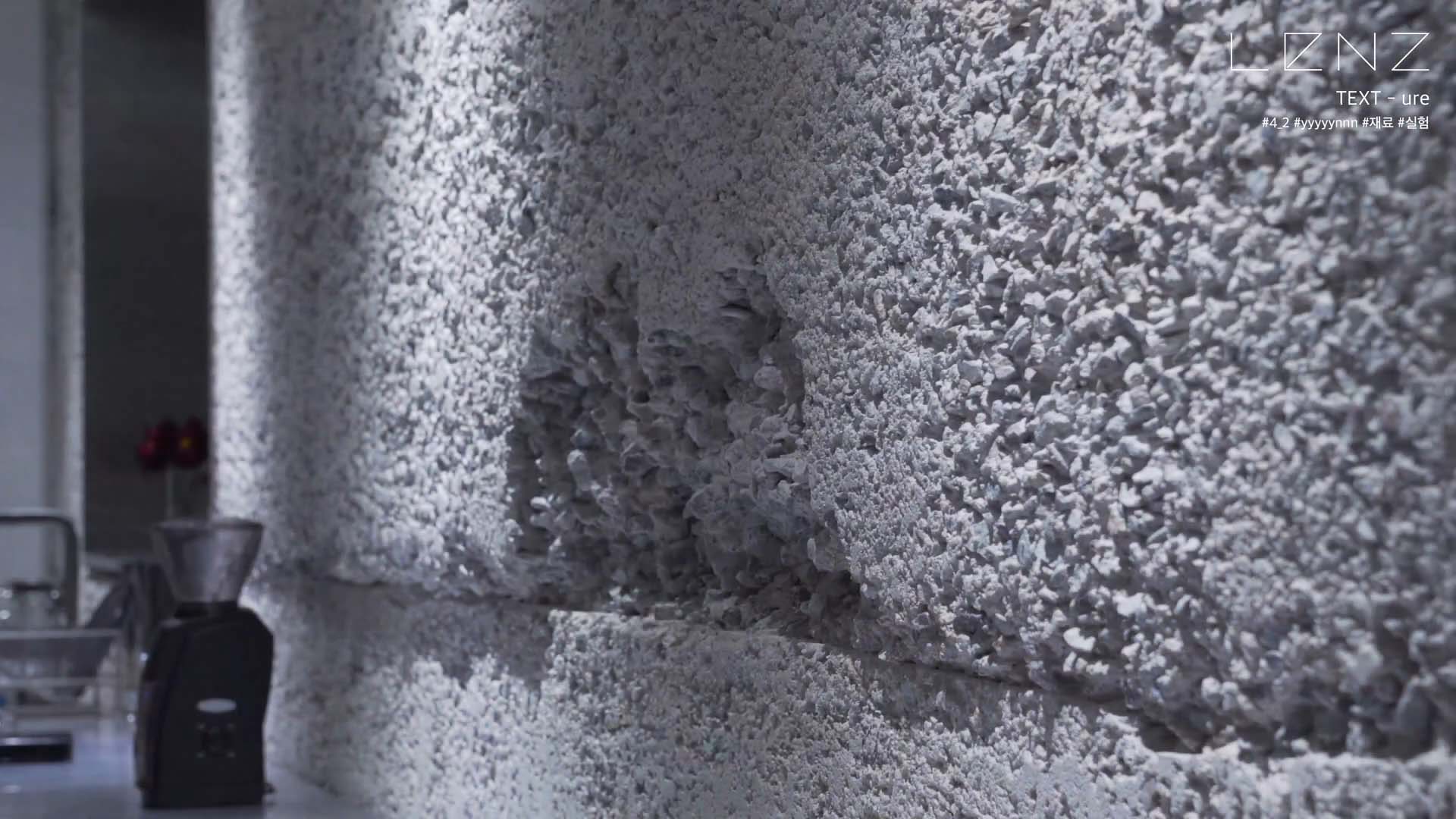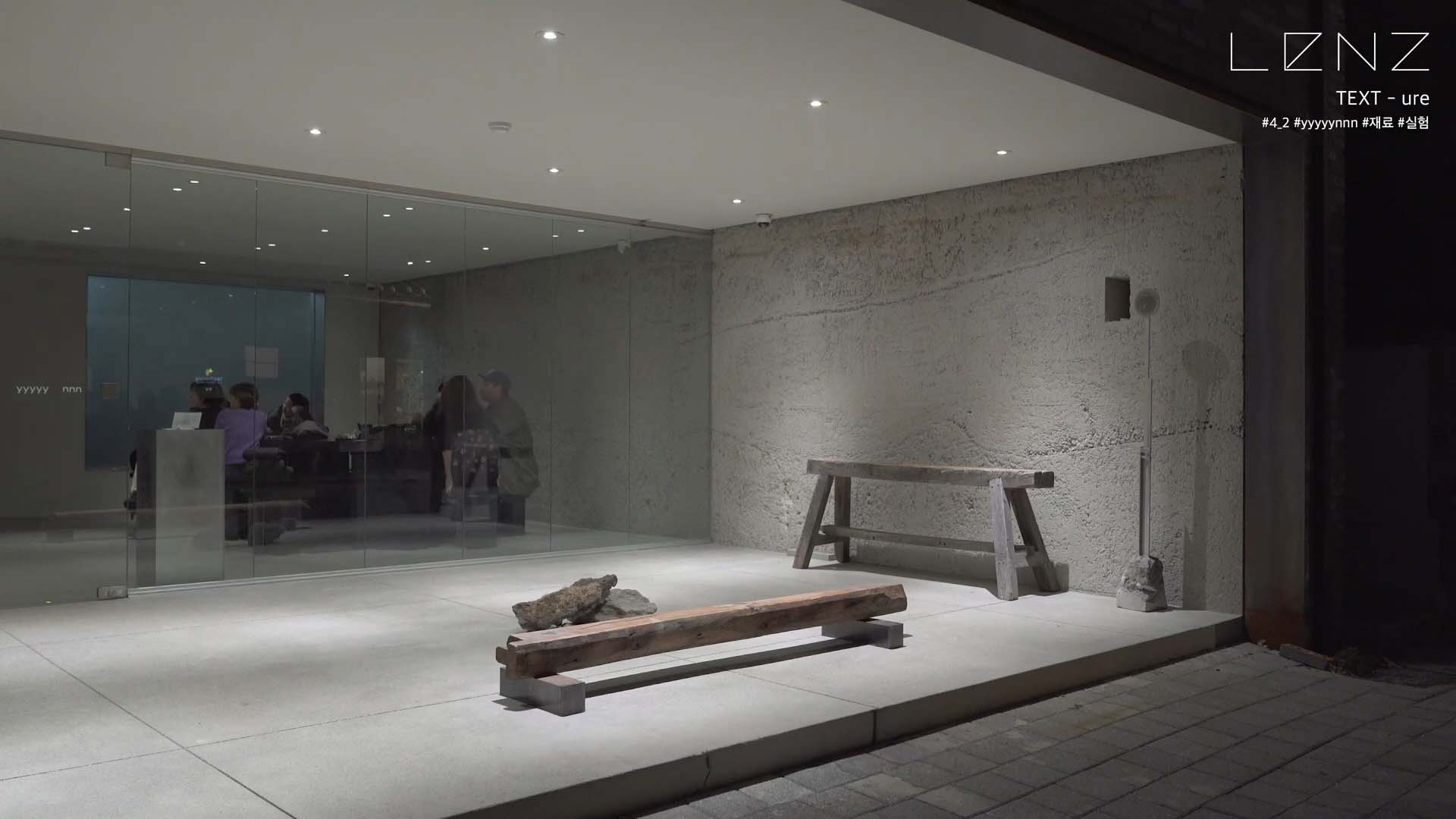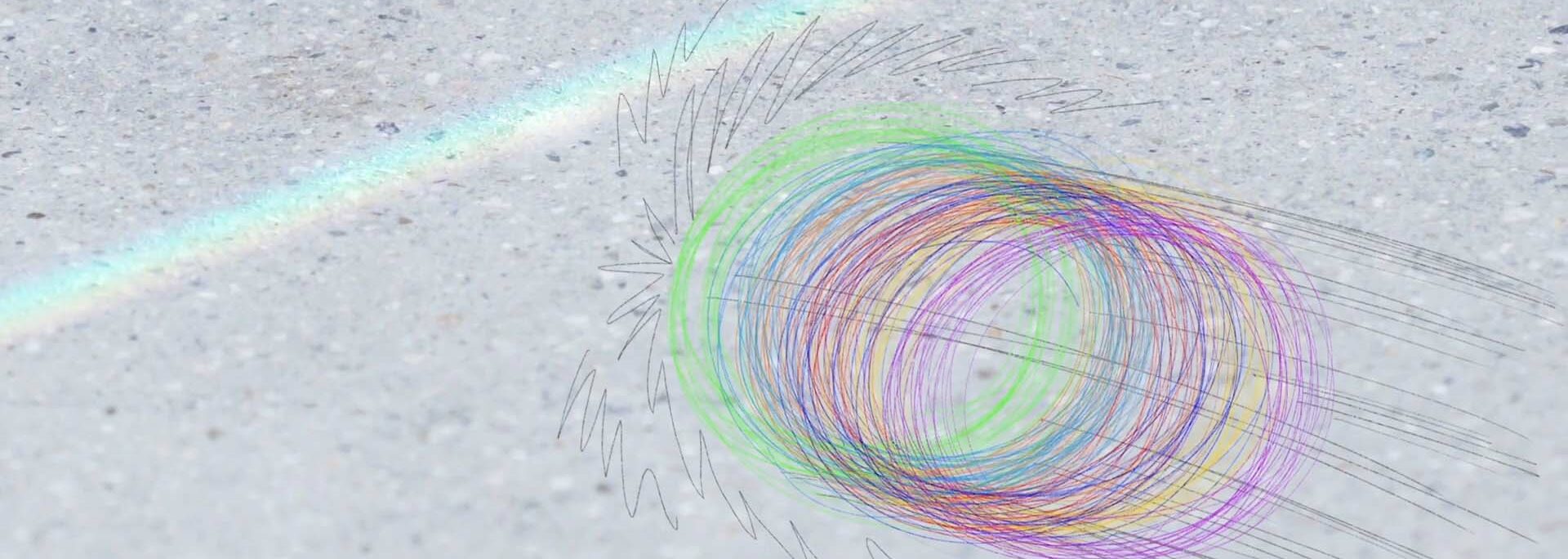Jiro: I have a question, not just about this space but also about the experimental lab downstairs. It might be a fundamental question, but I’m curious—why are you so drawn to materials?
Jin Kyung Lee: One reason is that I wanted to stand out. We’re not the kind of group that’s exceptionally good at design. But we thought, “How can we make this look well-executed, fresh, and captivating?” That’s when I realized that the power of materials is immense. I think that’s why I became so interested in them—because I wanted to be different.
MeeJee Lee: That’s such a fundamental approach. When people think about design, they often misunderstand it as being just about appearances. But what you’re doing feels like rethinking everything from the core. It seems like the form emerges from the essence of the material rather than being predetermined. For example, this table and those concrete walls—they weren’t created to achieve a specific look. Instead, it feels like the form came about naturally through experimentation and research. There must be a sense of unexpected delight in that, even as a creator. I feel like that’s why you continue exploring materials.
Jiro: Your approach feels incredibly fundamental and deeply rooted. That perspective comes through strongly in the space—it’s very noticeable.
Borisu: Listening to you, I became curious about the process. Is it more common for you to first envision a piece of furniture and then choose the material to match it, or do you sometimes discover a material and decide to create something specific with it? It feels like the two approaches might overlap.
Youngwon Kwak: There are definitely two approaches here. When we meet clients, we always make it clear: we’re not artists, we’re designers. Clients often approach us feeling a bit intimidated because our results tend to look distinct and unconventional. But when it’s a client project, we design based on the atmosphere and functionality of the space. While we might have a specific material in mind, we always check if it harmonizes with the space before proceeding. On the other hand, for personal projects, it’s more like, “Why not just try this out? We couldn’t do it elsewhere, so let’s do it here.” That’s the mindset we bring to those.
Jin Kyung Lee: As Youngwon mentioned, both approaches coexist. Sometimes there’s no clear order. At times, we start by creating the form of the design and then find a material that complements it. Other times, it’s more like, “We absolutely want to use this material—it’s perfect for this space,” and then we build the form around that. The sequence really depends on the project’s context and, of course, the budget. The budget often determines everything.


